How to Use Named Functions in Google Sheets
In this article, you will learn Named Functions and how to use them in Google Sheets.
What are the Named Functions in Google Sheets?
Named Functions are the newest additions available from late August 2022 in Google Sheets. The role of this function is to name and save your customized formulas with descriptions that allow you to share them with your collaborators in Google Sheets.
How to name formulas in Google Sheets
- Right-click the cell that contains the formula you want to generalize. Go to “View more cell actions” → “Define Named function”, which brings up a pop-up on the right side.
- If you want to create and name a formula from scratch, go to “Data” → “Named function”. Click “Add function” at the bottom of the pop-up menu on the right side.
- In the pop-up, you enter “Function name”, “Function description”, “Argument placeholders”, “Formula definition”, “Argument description”, and “Argument examples” (See our descriptions of each item beneath the screenshots).
- Press “Create” at the bottom of the pop-up.
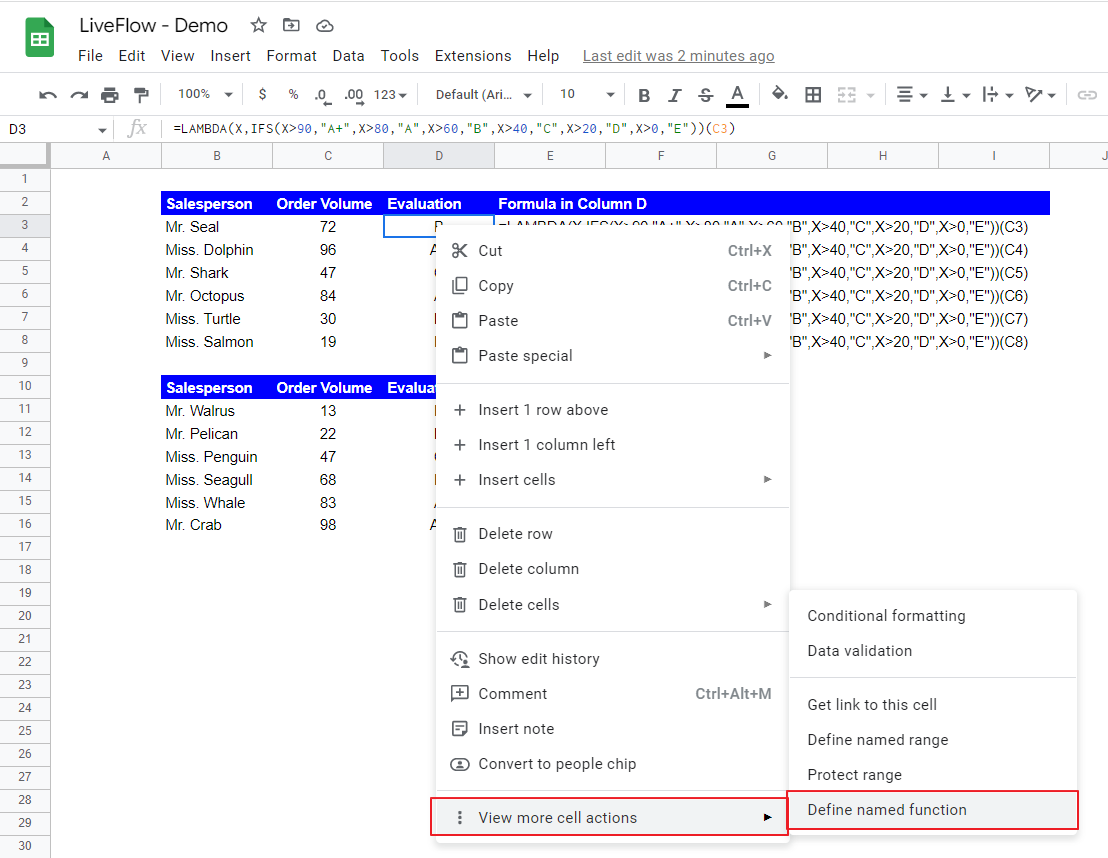
Function name: This is a name you want to give to your formula
Function description: This is a description of the formula you created
Argument placeholders: This is a name(s) that works as a placeholder(s) for future input. An argument means a value you enter to run a formula. Once you type an argument, remember you press the “Enter” key. You can skip this part, but we recommend you define argument placeholder(s) to make the formula understandable and easy to follow.
Formula definition: If you choose a cell containing a formula you want to register, this section is automatically filled. However, if you are writing a function from scratch, you must input it here.
Argument description: This is a description(s) of the placeholder(s). For example, you can add a note on what sort of value the user should enter as an argument.
Argument examples: An example(s) of the argument(s) your formula expects.
If you fill out these sections appropriately, they help you remember how the function works and what kind of input it needs and help other viewers and users of the formula understand what it is.
Keep learning with an example. Assume you are an HR manager and created a formula that gives a specific grade to an input order volume of a salesperson.
If the order volume input is;
Over 90, the formula returns A+;
Over 80, it returns A;
Over 60, it returns B;
Over 40, it returns C;
Over 20, it returns D; and
More than 0, it returns E.
If you are interested in how to create your customized formula or the “LAMBDA” function, check this article.

See the following example of how to fill in the items in the pop-up menu for a named function.
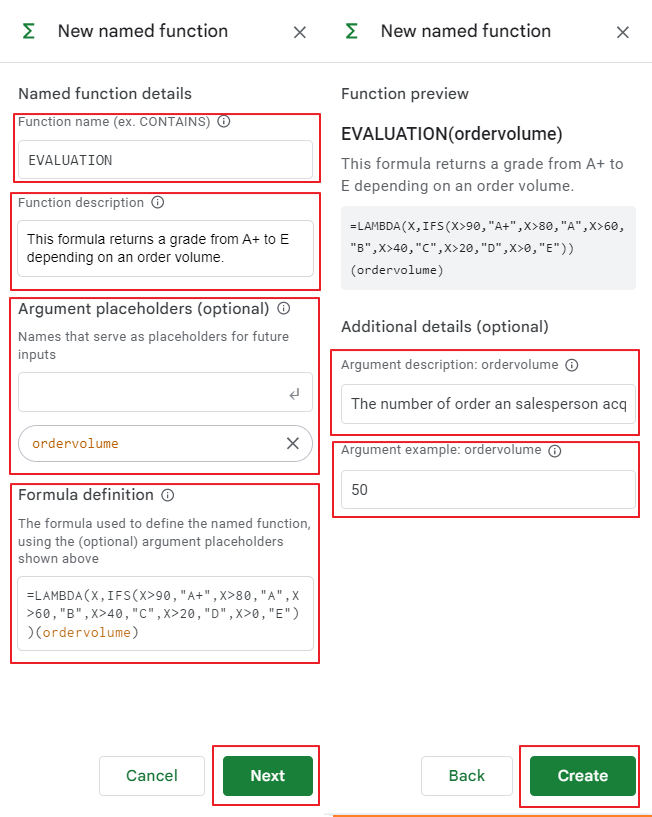
Function name: EVALUATION
Function description: This formula returns a grade from A+ to E depending on an order volume.
Argument placeholders: ordervolume (Only lowercase is allowed here)
Formula definition: We replaced “C13” with “ordervolume”
Before the replacement, the original formula was the following: “=LAMBDA(X,IFS(X>90,"A+",X>80,"A",X>60,"B",X>40,"C",X>20,"D",X>0,"E"))(C13)”
After the replacement, “C13” became “ordervolume”
“=LAMBDA(X,IFS(X>90,"A+",X>80,"A",X>60,"B",X>40,"C",X>20,"D",X>0,"E"))(ordervolume)”
Argument description: The number of orders a salesperson acquired
Argument examples: 50
Once you press “Create” button, your unique formula is registered. This information on the formula shows up when you or other collaborators use it, as shown below.
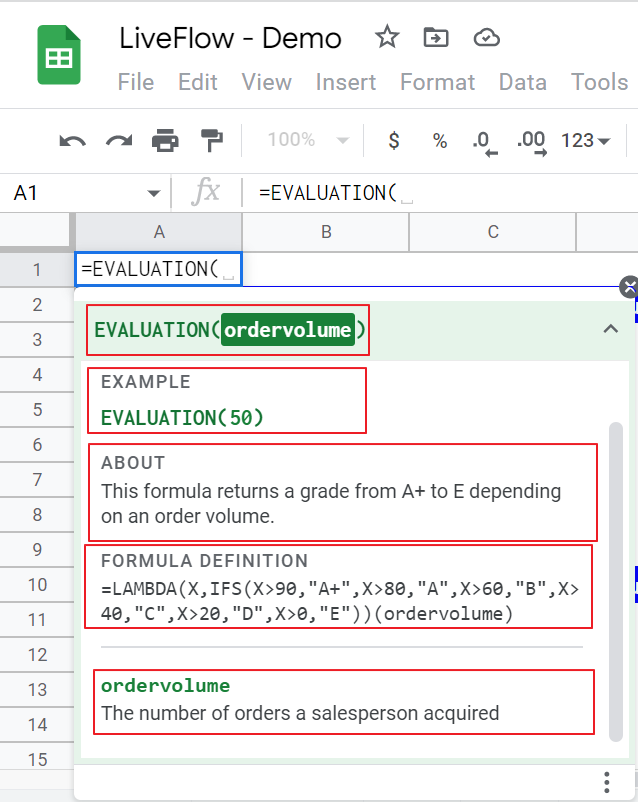
The picture below shows what the sample registered formula looks like. The formulas in both tables work similarly, but the Named functions look much more straightforward.
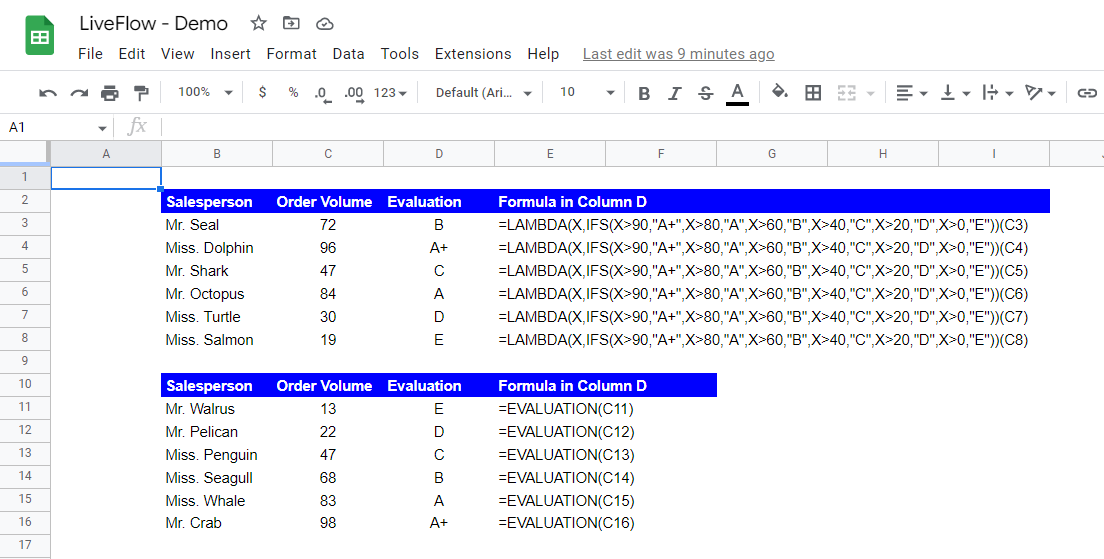
How to insert Named Functions in Google Sheets
- Type “=” and the name of the formula you want to insert or go to the “Insert” tab → “Function” → “Named functions” → The function you want to enter

How to view a list of Named Functions in Google Sheets
- Go to the “Data” tab → “Named functions”.
- You can see a list of the Named Functions on the right.
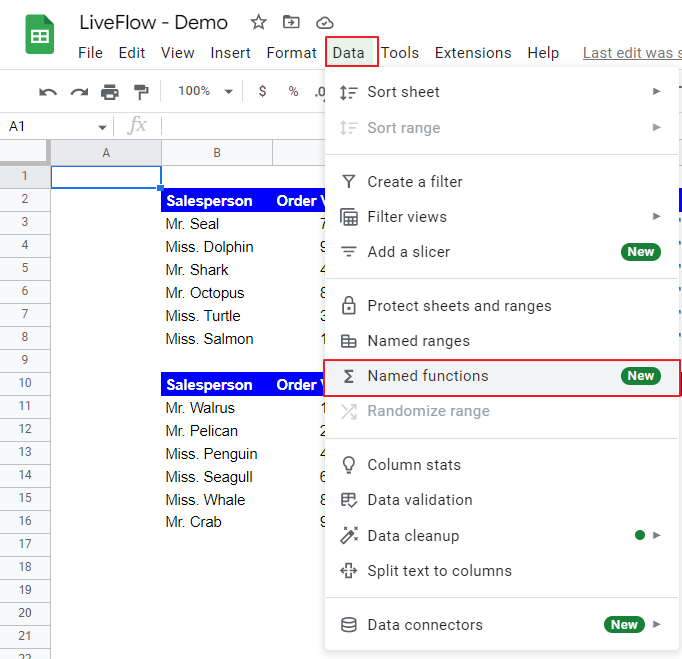

How to import the Named Functions in Google Sheets
See this article to learn how to import Named Functions in Google Sheets.

